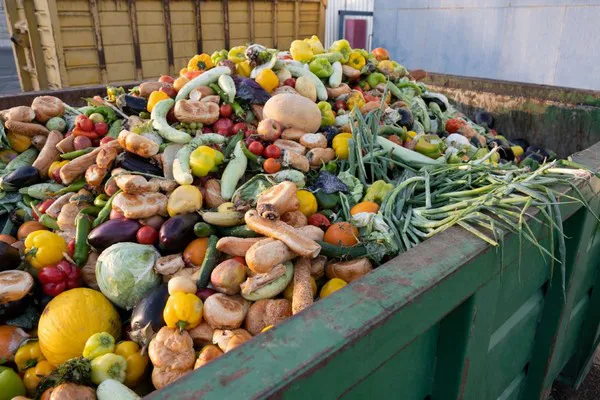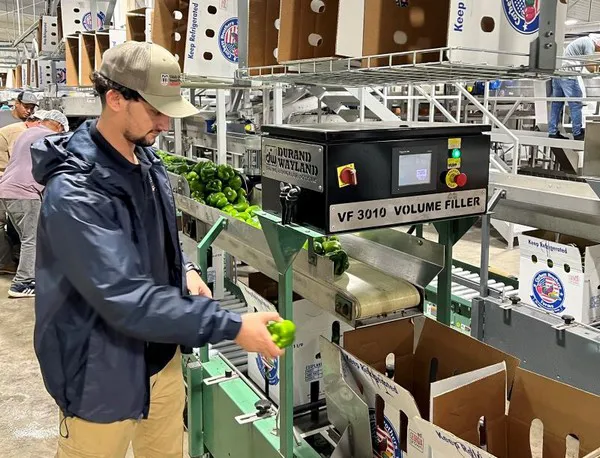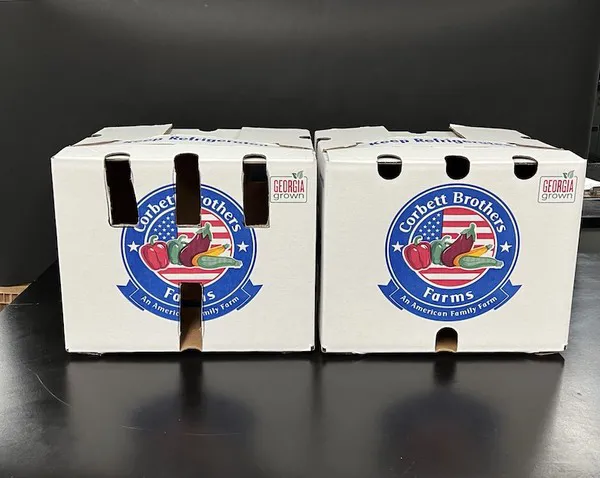In grocery stores brimming with brightly colored fruits and vegetables, it may not occur to many shoppers the complexity farmers navigate to consistently deliver high-quality produce each week.
Consumers hold high standards for fresh food, which farmers aim to meet, but hot summer temperatures and long-haul deliveries can degrade quality even before produce makes it into stores. Shipment rejection is a familiar reality in the horticultural industry.

Angelos Deltsidis, assistant professor of horticulture in the University of Georgia’s College of Agricultural and Environmental Sciences (CAES), specializes in fresh produce postharvest physiology. Despite technological advances, food loss continues to be a problem throughout the U.S., he explained.
“It’s not only environmentally unsustainable, but economically as well. Farmers pay to grow and harvest their produce, and they are also the ones who assume the loss of a rejected shipment,” said Deltsidis. “Unfortunately, many times growers are responsible for covering the cost of disposing of the produce.”
Deltsidis’ research program focuses on extending the shelf-life of fruits and vegetables and implementing technologies to improve market quality. He said there are many ways to ensure good quality and extend shelf-life, but the most critical is temperature management.
“It’s the single most important factor along the entire value chain because it not only improves overall profitability but helps ensure safety by reducing microbial growth and disease proliferation,” he said.
Removing field heat
Achieving the optimal storage temperature for produce is more difficult than it may seem, especially in the summer months when produce is harvested in temperatures ranging from 90 to 100 degrees Fahrenheit.

Freshly picked produce might sit in a harvest bin in the sun for an hour or more, where internal temperatures continue to rise before the bins are moved to a packing facility. Once there, produce radiates accumulated field heat, making it slow and difficult for standard cooling systems to effectively lower temperatures to the industry target levels based on the type of produce being cooled.
In a collaborative study with UGA Cooperative Extension agent Justin Shealy in Echols County, the research team performed on-farm trials with brothers Justin and Jared Corbett of Corbett Brothers Farms, one of the top growers of green bell peppers on the East Coast. The goal was to improve upon a decades-old method of precooling to increase efficiency and reduce postharvest losses.
For large-scale producers, forced air cooling (FAC) is the most common and efficient precooling method for harvested produce. Essentially, boxes of produce are stacked on pallets and lined up in front of specialized fans that force cold air through the boxes to pull field heat from the surface of the produce within.
Most modern packinghouses in Georgia have invested in FAC systems to remove field heat from freshly harvested produce, but previously there was no published information on specific time duration requirements. Instead, a standard 45 minutes was suggested regardless of the commodity, packaging type, amount of field heat or target temperature. As a result, field heat from freshly harvested produce is often not sufficiently dissipated, leading to more rapid quality deterioration, which has a negative economic impact for everyone along the value chain.
Low-tech solution to improve cooling, reduce food loss
“It was a simple question from a grower that got us thinking,” said Shealey. “Everyone uses the same shipping boxes, but what if we made slight modifications to their design and changed the way we stack them to make small, but significant changes in precooling efficiency? Scientifically, we know that if you can get the temperature colder faster, shelf-life improves.”

The team experimented with modified box designs and packing strategies to increase ventilation and allow produce to cool more quickly. To assess the results, they monitored internal temperature change over time in one-minute intervals.
“We found that with the standard box design used in most operations, produce needs to be precooled for more than an hour and a half to reach the target temperature — that’s an additional 45 minutes of cooling that is not happening in most packing operations,” said Deltsidis. “What was even more striking to us is that, while our box modifications provided only a 6% increase in ventilation, it enabled cooling in a third of the time needed using the standard design.”
The longer it takes to reduce internal temperature, the more water is lost as produce metabolizes its own sugar, he explained. By rapidly dropping the temperature during precooling, metabolic activity dramatically slows, preserving the quality and safety of the produce.
On a large farm, produce is harvested quickly and at a large scale. As new loads of freshly harvested produce come into packing houses, heat is continuously emitted. For many packing operators, it is more economically advantageous to keep the chain of production moving by keeping to a standard 45-minute cooling period rather than wait an additional 45 minutes to reach the optimal temperature. However, UGA’s modified box design and packing strategies give producers a low-cost, low-tech solution to reach target temperatures faster, save on electric bills and lower the risk of rejected shipments due to spoilage.
The research findings also stand to benefit consumers as higher-quality produce with longer shelf-life makes its way to grocery stores — and ultimately to our homes.
The team is gearing up for the final season of the research and will be replicating the study on a variety of commodities in the state.
“It’s these simple, low-tech modifications that sometimes get overlooked, but having spent the last two years tweaking the design, we hope our findings will help establish guidelines for individual crops, packing types and harvest conditions to improve efficiency within packing facilities and reduce losses along the value chain,” Deltsidis said.
Source: caes.uga.edu
